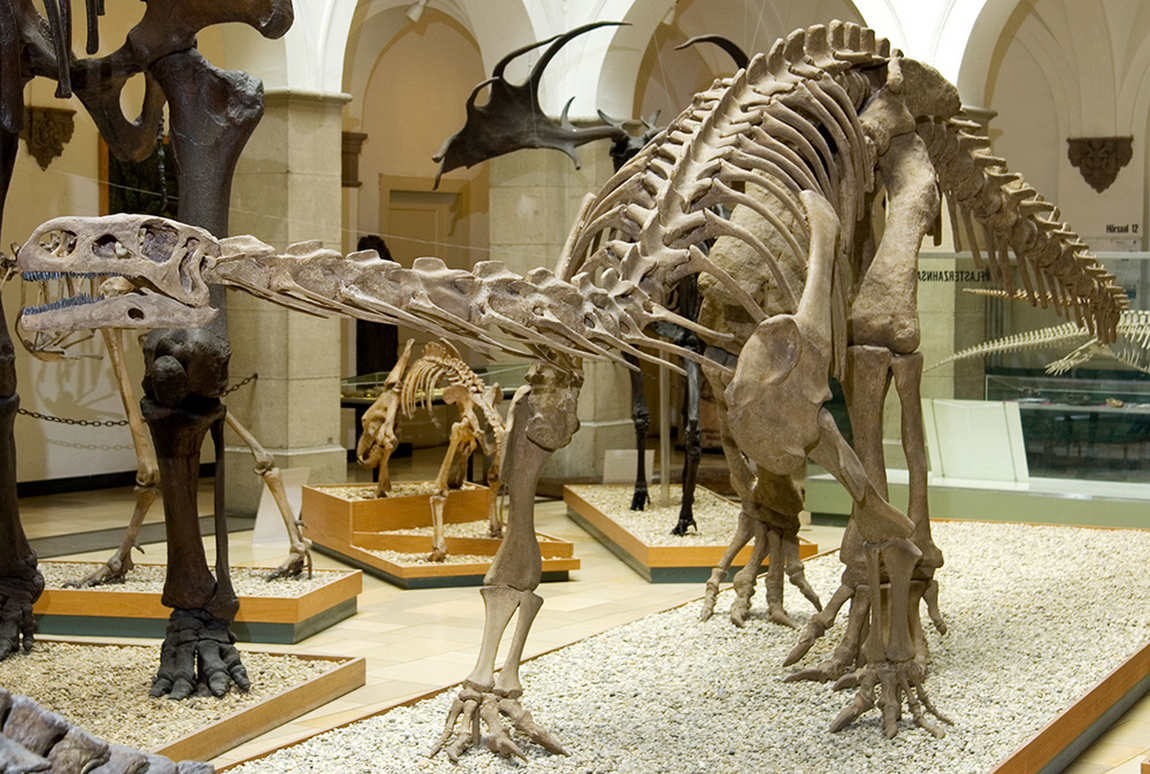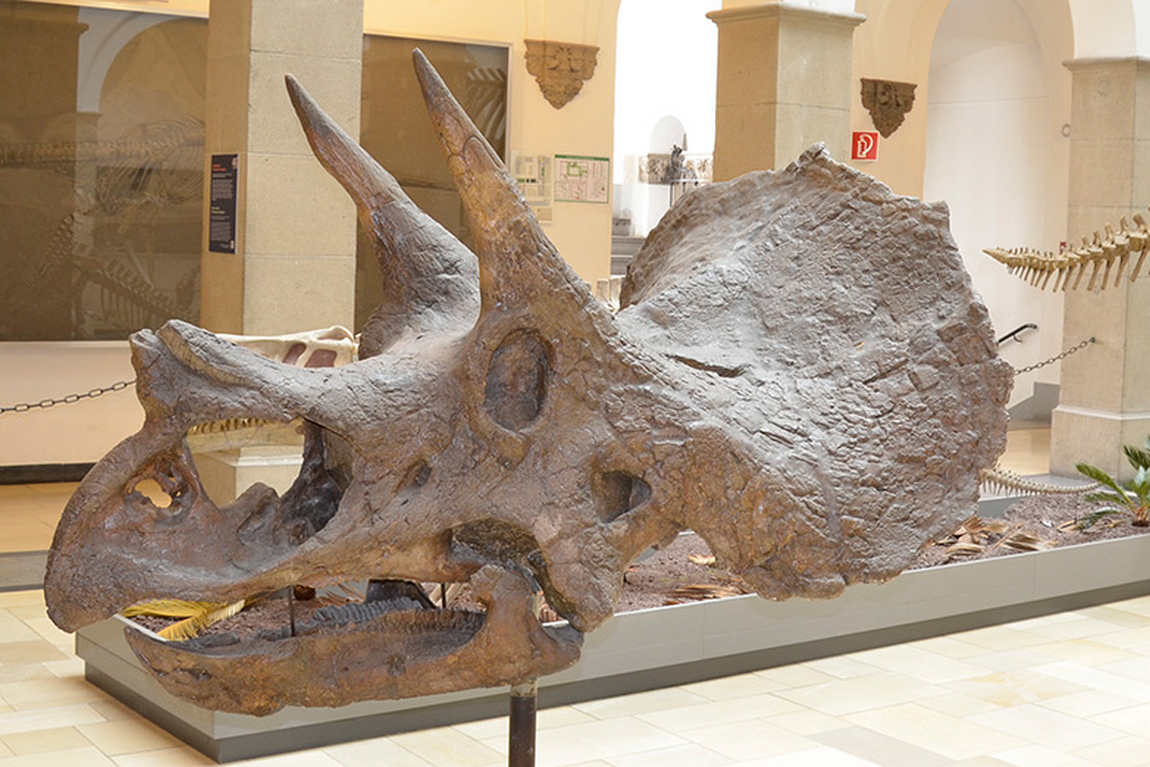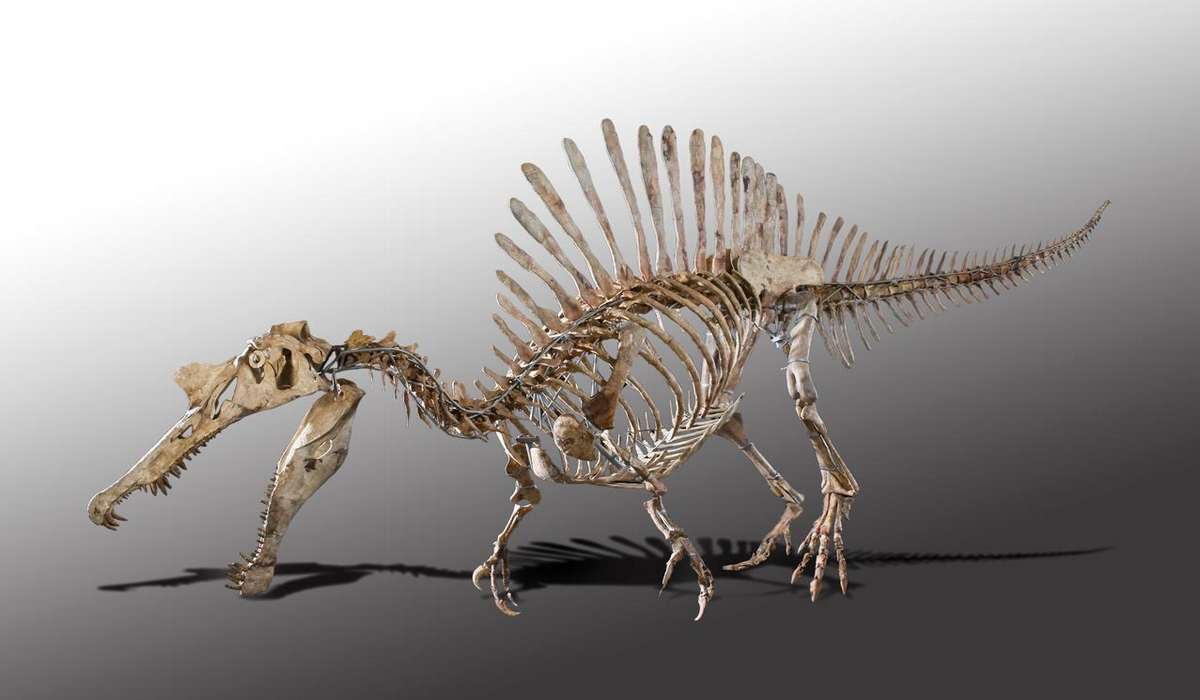See the remains of a giant prehistoric elephant or a bradisaurus, the first vertebrate to emerge from the water, examine the skeleton of an archaeopteryx up close, wander among replicas of dinosaur skeletons and marvel at the diversity of ammonites — isn't this a little adventure?
The Munich Palaeontological Museum, part of the Bavarian State Collection of Palaeontology and Geology, welcomes everyone with interesting exhibits and even free admission.

Despite its limited space, it is full of interesting exhibits that explain the beginnings of life on Earth and present scientific theories that allow visitors to experience prehistory in a very real sense.
As the exhibitions are child-friendly, you can visit the Palaeontological Museum as a family, even if the children don't understand English. What's more, admission is free and there are no restrictions on photographing the exhibits.
The museum building is owned by the university. It is close to the historic centre of Munich, so a visit can easily be incorporated into a city tour. The original plan was to open an arts and crafts college here. This explains the unusual decoration of the façade with motifs of various crafts.

The museum's collections had been assembled much earlier. For example, the first exhibition of rocks and minerals was opened in 1843.
Today the museum houses more than 1.7 million objects found during excavations in Bavaria. These are arranged in several permanent exhibitions covering botany, archaeology and palaeontology.
Children will not only be intrigued by the displays that tell the story of how life began, but also by the unique archaeological finds such as plant fossils, skulls of ancient apes and primitive humans, and skeletons of prehistoric animals.
Due to the presence of giant lizard skeletons in the collection, the place is often referred to as the 'Dinosaur Museum'. Indeed, it is not often that you see the original remains of prehistoric animals, but here they are, for the children to look at with interest and wonder.
The main hall is in the form of a glass-roofed arcade and much of the space is taken up by the remains of a giant prehistoric elephant, known as a gomphotherium. This extinct trunked mammal had two pairs of tusks and a shorter trunk than elephants.
Homoptera could reach three metres in height and up to five metres in length. Scientists classify them as an intermediate group between elephants and palaeomastodons. The animals lived near water and used their tusks to dig up the vegetation along the banks.
The skeleton in the Munich Museum's collection is almost the only one in the world that is almost completely preserved. The skeletons of dinosaurs, mastodons, giant tortoises, woolly rhinos and other ancient inhabitants are of great interest to children.
The most precious fossil is the skeleton of an Archaeopteryx, the forerunner of modern birds, which lived at the time of the dinosaurs. It was discovered during excavations in 1991: scientists found its remains in layers of limestone. The feathered forerunner was about the size of a crow but had a bright orange colour, like a parrot.
Another skeleton in the museum belongs to Bradisaurus, an early Pareyasaurus. The adult Bradisaurus was up to three metres long, had short legs and a massive skull, and its body was covered in plates and needles. Its large size gave it protection from predators and helped it maintain its body temperature.
Other large prehistoric creatures on display in the museum's halls include
- plethosaurus,
- prestosaurus,
- the big-horned deer,
- dinornis,
- pterosaur.
On the top floor is a collection of bivalve ammonites and their larger relatives, the first swimming multicellular organisms in Earth's history. Imagine: they lived more than 400 years ago!
It is equally interesting to wander through the halls of the Cranial Anthropology Department and compare the structure of the jaws of ancient humans, great apes and Homo sapiens. You can also see how the structure of teeth changed according to the type of food eaten.
The museum is still involved in scientific activities and excavations and is adjacent to the Geological Museum. It is definitely worth visiting with children — all the exhibits will be interesting and useful for them, and will help them to visualise the prehistoric world that they have only known from book illustrations.











